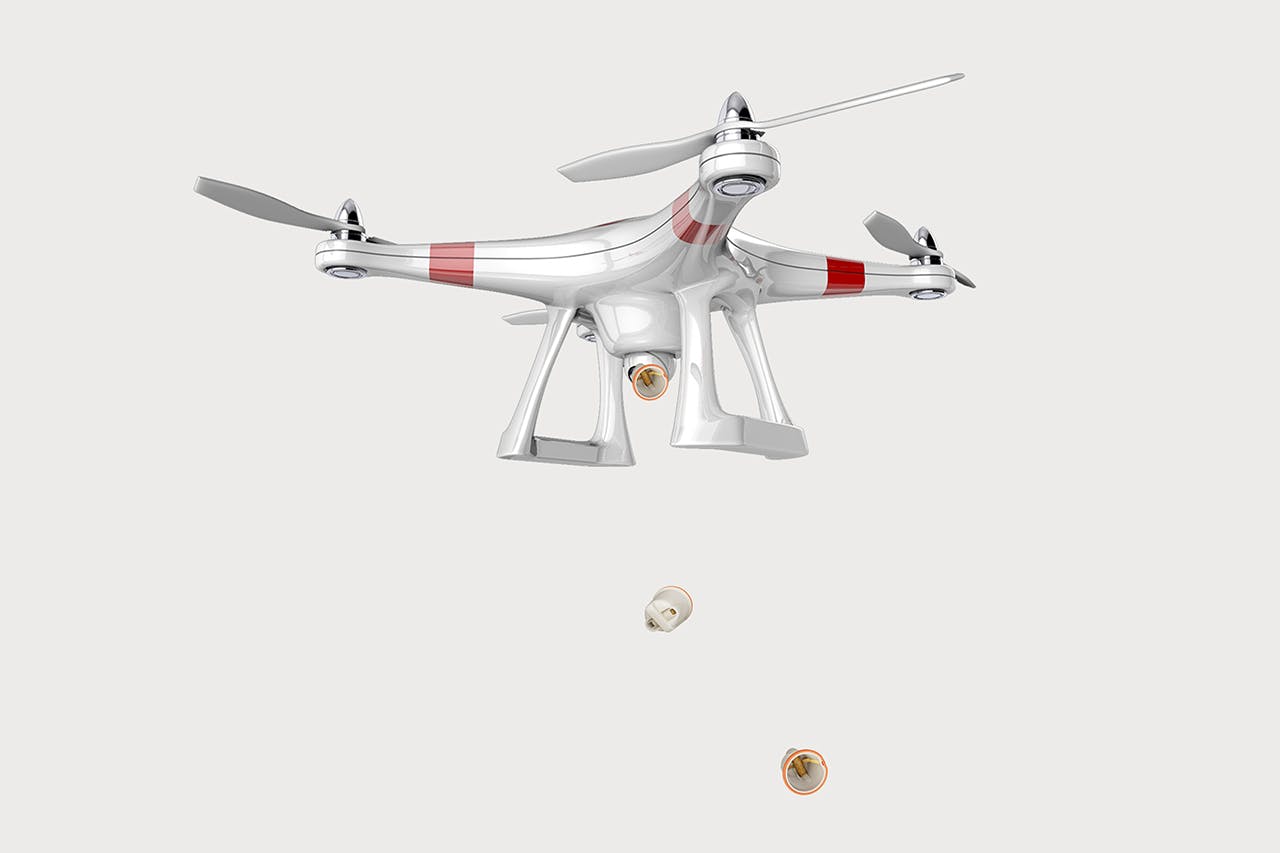A wrap of the biggest stories and best writing about the outdoors from New Zealand and around the world.
Biodegradable aerial traps could be a game-changer in the battle against rats.
DOC and Predator Free 2050 Ltd are backing the development of the single use rat trap that can be distributed by drone or helicopter.
Co-funded and designed by Goodnature, the shuttle-cock sized trap will biodegrade once activated.
“The aerial micro-trap is a new concept that is non-toxic and humane, and potentially cost-effective for suppressing rats over large areas and in remote and difficult to access locations,” Minister of Conservation Kiri Allan said.
The trap is still in its concept stages, but will receive $1.3 million of funding over five years for development.
Goodnature co-founder Robbie van Dam has been working on the concept for eight years, and said the prototypes are made of biodegradable plastic and rubber.
“The animal puts its head in and chews the bait which releases a ring that strangles it instantly and humanely,” he said.
The trap joins two other projects funded through the Tools to Market programme earlier this year – a drone designed to apply cereal baits for predator control and a long-life lure targeting rats, mustelids, possums, and feral cats.
“It is exciting to be supporting the research sector and innovative companies like Goodnature to develop ground-breaking technology which can then be used to restore nature through the mahi of numerous organisations, groups, iwi and hapū,” Allan said.
Man who discovered Forrest Fenn’s treasure comes forward
The man who found Forrest Fenn’s hidden treasure has stepped forward.
The decade-long hunt for the treasure chest – estimated to be worth at least US$1million – lured thousands of adventurers into the Rocky Mountains in pursuit of the fortune, including five people who died attempting to find it.
It was finally discovered in June, though the finder chose to remain anonymous, fearing he would be targeted.
Last week – as legal proceedings threatened to expose him – 32-year-old medical student Jack Stuef outed himself to Outside magazine.
“I thought that whoever found the chest would be absolutely hated, because it ends everyone’s dream,” he said.
“That’s something of a burden. I realize I put an end to something that meant so much to so many people.”
Fenn was a writer, collector and Vietnam war pilot who hid a box containing, in his estimate, around $US2million of jewellery and precious stones in the Rocky Mountains and whose hidden position was described in The Thrill of the Chase, a book he wrote.
Read the full fascinating story at Outside.
Southern alps feature in online hunting game
Kiwis playing the popular hunting game thehunter: Call of the Wild may find the scenery familiar.
According to Stuff, the game is set in the fictional Te Awaroa National Park – based off the Southern Alps and West Coast.
Because of Covid-19, world builder Kevin Darnis designed the scenery from his home in Sweden, using footage and photographs – though it’s not an exact replica of the South Island.
“We’ve taken reference from the place, but my goal as a designer and artist is to not give a replica of a place that exists. Instead, we want to recreate what it feels like,” he said.
The game allows players to battle against invasive species to protect Aotearoa’s native wildlife, and includes content on New Zealand’s human and natural history.
Released on December 18, Darnis is awaiting feedback from Kiwi players.
“For me, the greatest thing would be if someone living there says it looks like home,” he said.
Tourism operators keen on trans-Tasman bubble
Tourism operators are hopeful the trans-Tasman travel bubble will go ahead, RNZ reports.
“Any talk of a trans-Tasman bubble will certainly help encourage the industry and perhaps put an eye towards the future for some form of recovery,” head of Tourism New Zealand Stephen England-Hall said.
Plans for the bubble were revealed by Prime Minister Jacinda Ardern, though few details were revealed and it still needs to be signed off by Australia’s Cabinet.
Wilsons Abel Tasman chief executive Darryl Wilson is hoping for a bubble but urged caution.
“It is critical that New Zealand embraces the concept of its borders opening, and the conditions and the protections in place are adequate and conservative if anything,” he said.
“I don’t think anyone in the tourism industry wants to find overzealous lobbying that would compromise the lifestyle or the economy of the country.”
Tourism Industry Aotearoa chief executive Chris Roberts said if Australian tourists weren’t let in until March or April, it could see an economic lull.
“They’ll have that gap between the New Zealand-Kiwi summer and when the visitors arrive and that will cause operators all sorts of problems in terms of managing their resources and their staff,” he said.







